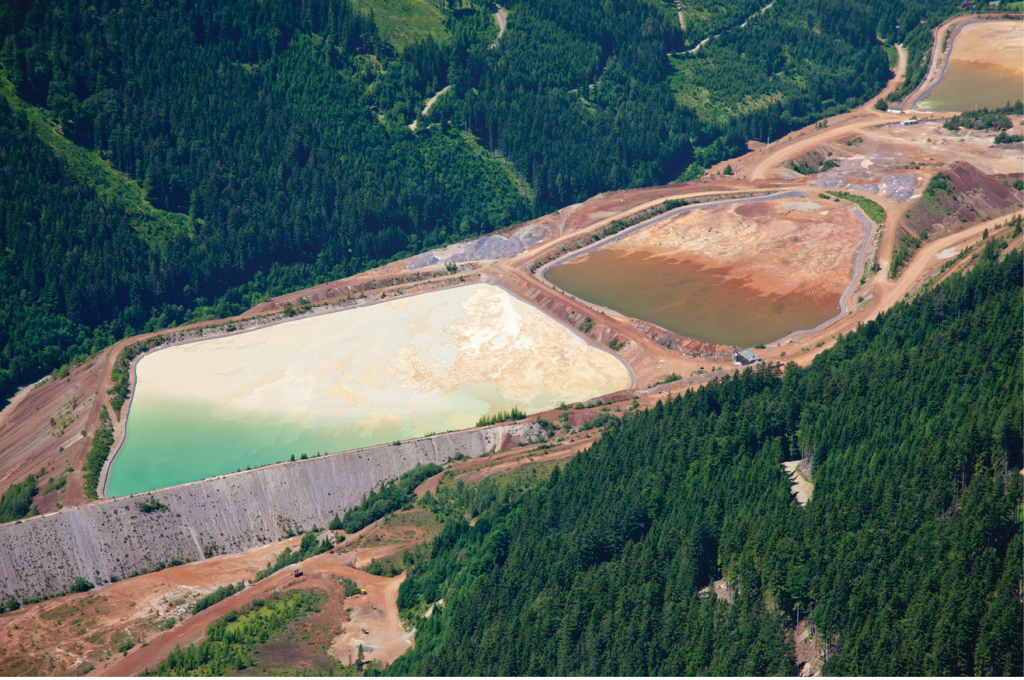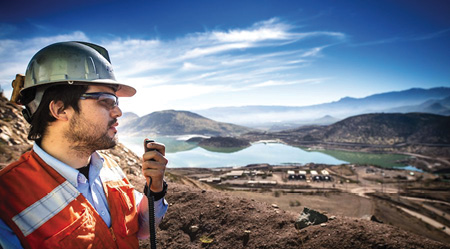Underground tailings: Q&A

Kristan Straub, Ljiliana Josic, and Dr. Shahid Azam were interviewed regarding the latest developments in tailings storage.
Kristan Straub is the CEO of Wyloo Canada and holds a B.Sc. in geology from Laurentian University. Kristan has more than 25 years of experience in the mining industry, including being the vice president of exploration at Glencore, and president of Koniambo Nickel SAS, New Caledonia. Kristan is a proud band member of Henvey Inlet and French River No.13.
Details
Ljiljana Josic is the senior director, tailings, water, and geotechnical engineering at AtkinsRéalis (formerly SNC-Lavalin) and has an M.E.Sc. degree in geotechnical/environmental engineering from Western University. She has over 25 years of experience in geo-environmental engineering, including geotechnical, environmental, and hydrogeology. Her work has included dam design, design of tailings, waste rock, and sludge facilities on over 50 projects.
Dr. Shahid Azam is a professor of environmental systems engineering at the University of Regina and holding a PhD degree from the University of Alberta. He is a geotechnical engineer with over 30 years of international experience. His work focuses on developing natural resources and civil infrastructure and using a multi-disciplinary approach to address mining and construction issues.
Q Many mines are now storing tailings underground. What is the process?
AKristan Straub: When ore is mined, a void is created. The purpose of underground tailings is to fill a void and prevent collapse. They are treated and upgraded, crushed, ground, and passed through a solution to leach the sulfides from the waste rock. The tailings are then dewatered and thickened into a concentrated paste. The treated tailings are taken back underground and used to fill the void spaces underground. Depending on the recipe used, binders are used to create a cement-like binder which gives the tailings strength. It is not concrete, but it is a hard material.
Regarding contaminants/toxic material in tailings, there will be a lot of work done beforehand. Whether they are sulfide ore, reactive based on the sulfur content in the tailings, the key associated risks is drainage. The tailings will not be exposed to water.
The chemicals associated with cleaning the tailings will be accepted ones, and no cyanide or arsenic will be used. Classic lime slaking changes the water pH, turns it into a sludge, and then this is used in backfill and the water is brought back to pH neutral.
There are technologies available on the market today and extractive technologies which extract metals left over from the residue and allow it to be safely stored. Most Ontario and Manitoba underground mines are storing their tailings underground.
Ljiliana Josic: The tailings are generally mixed with a binder, usually cement, and then pumped underground to fill voids and help support an underground mine.
Q What are the advantages and disadvantages of storing tailings underground as opposed to on the surface?
A Ljiliana Josic: Underground tailings deposition or backfilling is considered one of the safest forms of tailings disposal. This technology has many advantages: The disposal of mine tailings in underground mine stopes results in an increase in their geotechnical stability, an increase in their geochemical stability, and a decrease in their leaching potential. Another benefit is a reduction of the footprint compared to land use on the surface by not having a dam and reservoir used as tailings storage facilities and the elimination of seepage that can reach aquifers in watersheds.
It reduces the risk of direct exposure and limits long-term monitoring. In addition, the underground tailings disposal can reduce tailings porosity and decrease their permeability, as well as provide an alkaline environment that can limit the potential for acid rock drainage (ARD) and metal leaching.
The disadvantage of this could be the higher cost and the location of the underground mine.
Kristan Straub: So far, there have been no failures of this type of tailings storage system. It is designed for use in underground environments. The binder added to the tailings helps it resist interaction with water. It is located under the water table, as opposed to above ground mines which are in contact with the water table and subsurface ground water. As this will be below the water table, there are limited potential risks, and the scale of the risk is mitigated.
Because of the way the tailings are stored underground, they lose their reactivity. The rock is processed, ground down, and put back in with cement binders. The risks are associated with interacting with surfaces, and we are limiting that interaction.
Other extraction methods leach the sulfides out of the metals and mix it back into concentrates. This is not cheap but is good stewardship and is the right thing to do.
Dr. Shahid Azam: This approach is acceptable; failures have not been associated with this method. This is popular in Ontario and Quebec and is referred to as mine backfill. There can still be stability issues as they use different types of binders to improve backfill materials. The tailings should be fine if someone keeps an eye on them.
Q What is the main cause of tailings storage failure?
ADr. Shahid Azam: Failure is common in Canada. About four years ago in Brazil, there was a big one, and more have happened in China. It is not just happening in developing countries; it can be anywhere.
The main reasons for tailings failure are communication problems on the site. If the mine is big, the number of personnel working on the mine is big, with lots of employees. Who says what to who becomes important. Record keeping becomes important.
The dams can be big in size and are not always constructed using high quality materials. Often the storage container is made up of less than high-quality material, just whatever material is on hand at the site. So, storage is often made of marginal material, and physical and chemical stability is an issue.
The mining company is not an expert in dam construction. They are experts in getting the commodities out. Dams can be raised in height as more material has to be stored over time. These must be managed for a very long time. In one case in the U.S. at Questa, the mine is 100 years old. There was a classical tailings failure in Spain, where the people at the mine did not pay much attention to the geotechnical design.
Another problem is the rock formation. After it is blocked off, it becomes fragmented. Water comes through the tailings, and bacteria also comes through, and if it has residual chemicals, for example pyrite has iron, and when mixed with water you get sulfuric acid. When water and gas form round a material, it makes more chemicals, and contaminants are going out, and the physical stability is compromised.
Regarding tailings construction, how firms implement this on the mining site can be a problem. Sometimes they put new geological material in there, but how will it work in the long term? There can be major issues with this construction practice depending on the material installed.
One problem is the lack of storage capacity. One example is a uranium mine in Saskatchewan, they had to make sure it did not dewater too fast. You want to increase the tailings storage capacity gradually rather than too quickly.
In Chile, the biggest problem is the extreme aridity of the land. You must get the water out of the tailings. This is not such a big problem in places like Ontario.
Active earthquake zones are another issue. And there are always tremors at mine sites whenever they are blasting on site. Scale and comminution are site-specific. Innovations and technological improvements are not happening fast enough and cannot keep up with the pace that is required.
Kristan Straub: Regarding the tailings dam failure at Mount Polley, the upstream tailings dam contained both tailings and water in a reservoir, the dam failed, and the tailings leaked into the environment.

Q What are the important considerations in planning storage failures?
ALjiliana Josic: Achieving physical and chemical stability of the tailing’s storage facilities is paramount for the mining companies, designers, operators, and community. The primary goal is safe facilities, and operating companies must commit to making safety a primary consideration in the tailings dam design, construction, operation, closure, and post-closure monitoring.
The tailings facilities should be regularly inspected, and any potential risk must be reported and mitigated. The monitoring instrumentation must be placed strategically, and data must be collected regularly and analyzed to identify and mitigate any potential risk. The annual probability of failure must be periodically calculated and reported. The water management of the structure must be regularly inspected to prevent overtopping. Dam safety inspections and dam safety reviews must be completed and documented. The Canadian Dam Association provides guidelines of their procedures. In addition, independent tailings review boards should be engaged to promote safety and prevent potential failure.
An emergency action plan or emergency preparedness and response plans related to catastrophic failures of tailings facilities must be prepared and discussed with all potentially affected communities, workers on the site, operators, and other stakeholders.
The document must be regularly reviewed and updated. Emergency contact names and details must be included in the emergency preparedness and response plans.
The operating company is responsible for taking all steps necessary to save lives and provide appropriate humanitarian aid in case of a sudden failure. All necessary resources and support for local and national governments and first responders during and after a failure must be provided by the operating company.
At the scoping level, different technologies for the tailings management should be evaluated and the best option selected based on selection criteria that includes social, economic, environmental, technical, and project economics criteria.
Tailings storage facilities are unique structures designed for the specific environment, region, climate, ore type, geotechnical, physical, and chemical properties.
Dr. Shahid Azam: The rush for critical minerals — the government has expedited the process. How will it be ensured before digging, does the mine have everything in place, is it technically and chemically stable, and how will it be affected by climate change? There must be consideration of all the above. The public wants jobs, minerals, and metals.
The observation approach, which is well-established in our industry, means instruments are installed in critical sectors to make sure the tailings are fine. It means that someone keeps an eye on the tailings.
Now, Canadian mining companies extracting minerals must follow Canadian standards for environmental protection. They must be included in the mine site design, and the site must be compliant.
One new issue is climate change. If there is a major rainfall, are you ready for it? What if it happens?
Q What is the approximate volume of the tailings which can be stored underground?
ALjiliana Josic: At best, about 60% of the tailings can be placed underground. Reducing the surface-disposal footprint, underground disposal of cemented tailings can provide ground support to minimize or prevent subsistence or surface collapses.
Catherine Hercus is a freelance technical writer.
Comments